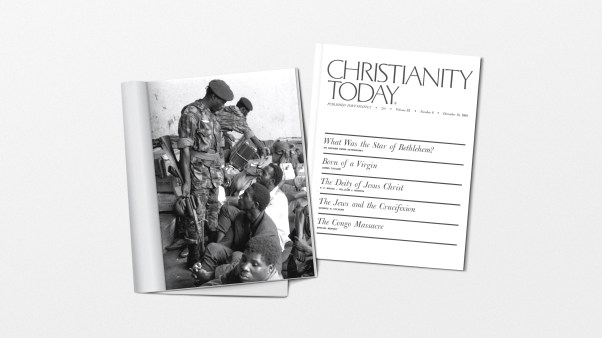Even traditional churches can gain a healthy flexibility.
Can a multi-generational, multi-purposed, multi-managed, mixed-motive, diversely-preferenced congregation grow and adapt to a constantly changing culture?
Of course they can. But who would want to suggest it to them?
Not many ministers enjoy tightening the tension of a congregation stretched between frustration (for moving too slowly) and fear (of changing too fast).
Yet, in an age of newly-planted, zero-history, purpose-driven, narrowly-targeted, seeker-sensitive success stories, the current love of my ministry life is serving an established congregation. My passion is to communicate to these beloved but diverse people that not only is their past worthy of celebration, but their best days are still ahead.
It is a difficult mission. Most established congregations are somewhat frightened by the thought of relating to unchurched people where they are in our culture. If you lead in that direction, being wounded by “friendly fire” is likely. It is kind of like, well, taking up your cross and following Jesus.
When in Athens . . .
The heritage of our congregation is a complicated mix of history and evolving evangelistic mission. It includes complete trust in biblical authority, congregational autonomy, early Christian ideals, and evangelistic preaching. Our church emphasizes that the Bible-book, chapter, and verse-must support every point and sub-point of all public proclamations.
That solid heritage, though, and the Sunday night seminars we do each spring (“How to Divorce-Proof Your Marriage”) are worlds apart. We intentionally designed these seminars to look like anything but a church service. A few modern-day translations of Bible verses are sprinkled between quotations from movies, news magazines, social scientists, and cartoons from LEADERSHIP. The seminars are advertised in an interlocking campaign of newspaper ads, billboards, radio, and cable television spots.
I’ve found both worlds in the passages of the New Testament. The public proclamation of the early church was relentlessly redundant in matters of Christ, the Word, the Cross, the Resurrection, and salvation. That focus was maintained whether in Jerusalem, Athens, or Rome.
The presentation varied, however, tailored to the audience and the situation. When Paul spoke to Jews, he cited their history and multiple passages from the Old Testament. In Athens, however, no Scripture was quoted directly; the only source cited was a well-known Cretan poem written to honor Zeus (“For in him we live and move and have our being”)!
As a devout group of Scripture-quoters, we have followed the scriptural example of Paul in Athens: we don’t quote Scripture to people not yet ready to grasp it. That kind of flexibility is supposed to be impossible in tradition-loving, middle-aged churches.
Impossible, no. Difficult, yes. It requires a special creativity to manage. Here are five suggestions for this wonderfully challenging task.
Redline core areas of identity
Older, multi-generational, diverse congregations cannot afford to become extremely anything in a short period of time without damage to their unity. Such congregations do not turn on a dime. If they did, their commitment wouldn’t be worth the dime they turned on.
Established congregations turn like ocean liners, so slowly some changes are barely noticeable. Yet they reach their destination, eventually.
We make only minor changes, for example, to our Sunday morning worship style. For better or worse, most of our long-time members’ Christian identity is directly tied to Sunday morning worship. But the membership core is confident there are no intentions to “fiddle” with Sunday mornings. Consequently they find it much easier to give permission to new small-group ministries, new seminars, a new youth seeker service, and other creative ideas.
Some suggest that Sunday morning is the best time to attract outsiders. And if we were a zero-history group, we could well begin with that purely evangelistic mission. But we have a history: It is the difference between Acts and Hebrews. The Great Commission must be weighed with other critical issues involving discipleship: equipping the saints, encouragement towards ministry, and maintaining unity.
So we prepare seekers for Sunday mornings through intermediate activities custom-designed for them. We get permission for those activities because we protect the key elements of our traditional congregational identity.
Areas most crucial to the identity of the long-time members need to be “redlined”; they’re out-of-bounds for major change.
Preach maturity as shared sacrifice
We once followed the suggestion of one expert, having everyone identify their favorite radio station. We did this to discover their true musical tastes. Perhaps, the staff and I hoped it would reveal the clear preference for the contemporary, providing a rationale to move beyond the strange blend of old-time gospel songs and the contemporary ones we currently do.
The results: 35 percent preferred contemporary, 35 percent preferred oldies, and 30 percent listened to all news-and-information stations. Our survey revealed we had no consensus.
Many middle-aged congregations are notoriously middle-of-the-road blends of worship styles and outreach techniques. Such hybrids come from generational compromises: the congregation seeks to do what they collectively believe God wants; yet they seek to do it in ways that will offend the fewest in the congregational core.
Some growth experts, however, have said those who pursue blended styles merely take turns “insulting different segments of the congregation.”
But we believe otherwise: blended styles are the result of shared sacrifice and spiritual maturity. Traditional congregations committed to outreach also must passionately communicate the concept that sacrifice always goes with spiritual maturity. We’ve found most in our church ready to live that kind of sacrifice in the name of denying themselves, taking up their crosses, and following Jesus.
A great opportunity to teach this shared sacrifice presented itself at a retreat. I preached on the topic several times that weekend, and between my sermons, our song leader led the congregation in an informal time of singing. He would ask participants to suggest their favorite hymns, and then the group would sing the selections.
At one point, when the song leader asked for a new round of suggestions, I popped up and said, “Why don’t we apply this principle of shared sacrifice? From this point on, you can only suggest singing a hymn that is not one of your favorites but one that you know is valued by others here.”
People looked at me as if I had just shown up, uninvited, to their party.
“Then, let’s pass the acid test,” I continued, “by singing those songs as passionately as we would our favorites.”
Silence, and a profound pause. Then a few, softly-spoken, uneasy suggestions were offered. Before the weekend was out, however, the suggestions came easier and faster. Some huddled to ask others about their preferences. The singing was never better.
Several weeks later, long after the points of my sermon were but faint memories (if that), people were still talking about the great worship times during that weekend. I heard comments: “I didn’t realize how satisfying worship could be just by demonstrating love for God and others by intentionally refusing to please ourselves.” We remembered that we were a part of a different kingdom where there is no greater love than laying down one’s life (and even one’s musical preferences) for a friend.
Let options reflect your mosaic
While we must sound the call to sacrifice, we must also recognize our diversity by providing options whenever possible.
This fall, for example, we are launching small groups on Sunday evenings, but for those who do not like groups, the more traditional Bible class will still be available. A special sermon series on “How to Share the Gospel with a Friend” doubles as a traditional gospel meeting for those who want to bring their friends.
In general, we have discovered different generations of seekers, like different generations of believers, prefer different evangelism styles. To increase our chances of making a connection, we attempt to match up seekers with witnessing believers by generation, religious background, and philosophical orientation.
Such variety broadens our reach into different segments of our world, lessening the “in-house” hassles that naturally come by asking everyone to do the same thing-take it or leave it.
While we are not ready to be all things to all people, we can be a reflection of our congregation’s mosaic. We are using our variety to reach similar people in our surrounding community.
Keep your enemies close
This is hard to admit, but I learned this principle from Michael Corleone in The Godfather (Part II). In the midst of great trials, he travels to his boyhood home in New York. An old friend asks Michael how he intends to handle all his problems. Michael responds, “Pop taught me many lessons in this house . . . one of them was to keep your friends close and keep your enemies closer.”
Everyone who opposes us, of course, is not an enemy, but such people should not be ignored or left to their own devices. That only invites unnecessary conflict.
We make every effort, early in our planning, to incorporate those who may be bothered by a new ministry. They are allowed to voice their objections. If the church leadership can accommodate their complaints and still reach the desired goal, we modify what we initially planned. This way those who could make life harder, we’ve found, often feel compelled to voice their support once their contribution has been added.
“The Godfather” principle gives creative ideas a better chance to survive.
Offer ambiguity
Our church has a strong commitment to congregational a cappella singing, which appears to us to have been the norm among first-century Christians. But even within that tradition, personal convictions run the spectrum.
I’ve found I can say nothing of substance on the topic publicly without drawing someone’s ire. (Of course, Ire and I are old friends, having spent much quality time together.)
Friction can develop between those who believe the way to please God is by the whole congregation singing and those who believe a hymn by a quartet still permits everyone else to participate internally.
The way to deal with this dilemma is very clear-with a healthy dose of ambiguity. We have discovered that those who believe strongly in congregational participation also enjoy gospel quartets and other singing groups at times outside the official “time of public worship.” We build on that comfort zone and use occasional singing groups at the beginning or at the end of a worship assembly.
I usually will introduce such music with statements like, “Before we all have the opportunity to worship by singing together, a group is going to help us focus on the theme for this morning’s worship with a special song.”
Someone, feeling compelled to have all things nailed down, may come up afterwards and ask, “Now, did that singing group sing before our public worship began or at the beginning of it? After all, your introduction left both interpretations possible.”
“Thank you,” I’ll reply.
“What do you mean, ‘Thank you’?”
“Thank you for noticing how I am trying to respect a wide range of personal convictions. I want to make it possible for those who believe a singing group is all right before the ‘official’ worship assembly to be at peace with those who do not make that distinction.”
I’m not afraid to voice my convictions, but I’ve found it wise to resist doing so at every opportunity. I try to keep the primary message primary. Christ, the Word, the Cross, the Resurrection, salvation-these are recurring themes for a purpose.
Strategic ambiguity at less critical points allows a diverse congregation to continue doing the important things together.
Churches marked with traditions and hair-triggered judgments require relentless patience. They also demand a creative mindset, a healthy respect for the stability tradition brings to a group, and the unwavering hope that Christians really do want to please Christ more than themselves.
-Michael Lewis
Bammel Road Church of Christ
Houston, Texas
Leadership Summer 1993 p. 23
Copyright © 1993 by the author or Christianity Today/Leadership Journal. Click here for reprint information on Leadership Journal.









